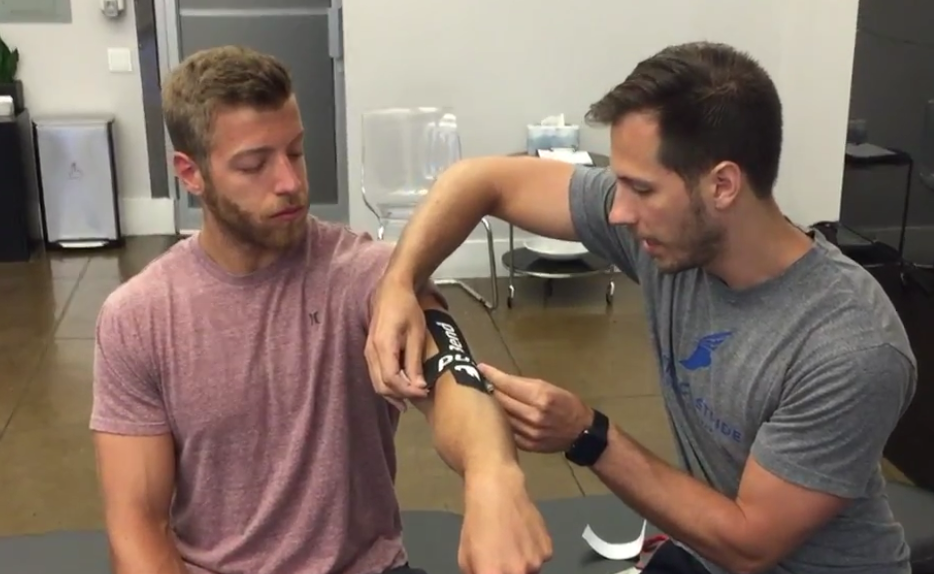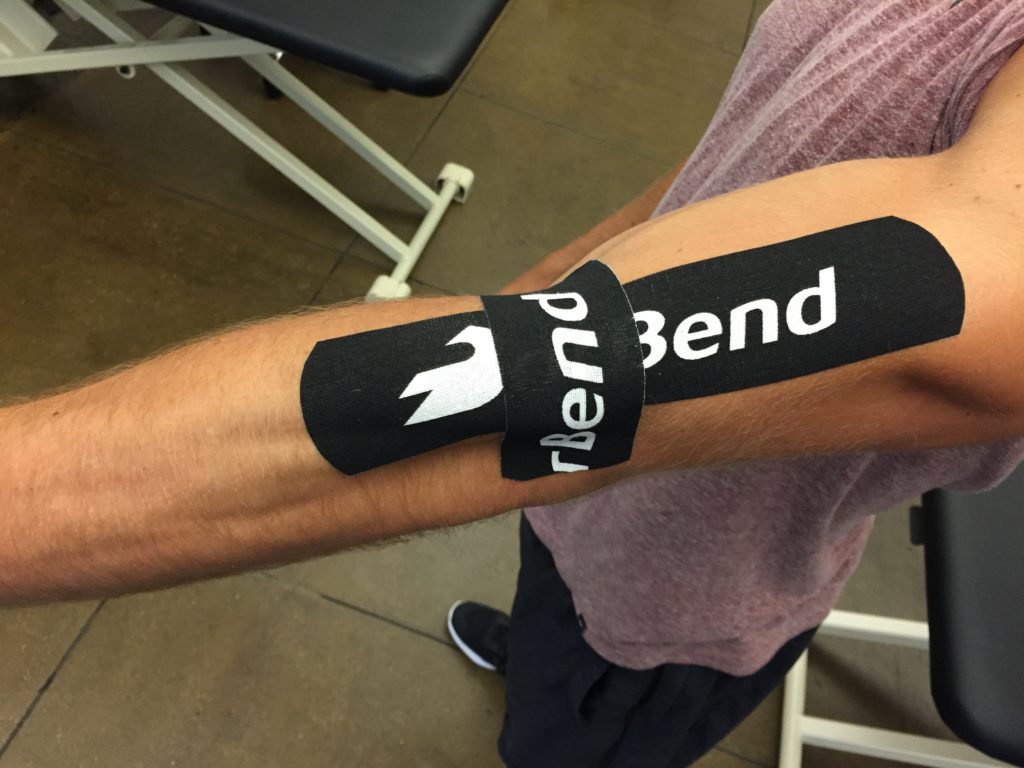A common area to tape for athletes in both strength sports and regular sports is the elbow. Lateral Epincondylitis is a common cause of pain and discomfort at the elbow. Common symptoms of Lateral Epicondylitis is pain towards the outside of the joint. This often feel like an excessively tight and pulling sensation at the elbow, especially with gripping.
This condition can be a nuisance, especially for the athlete who may not have the appropriate time to rest or rehab the issue. To learn more about taping the elbow, we reached out to Joe Gambino, PT, DPT, and CSCS at Perfect Stride, New York City. Check out the video below for a demonstration on taping and detailed taping descriptions.
Note: All motions shown are for informational purposes only. The information in this article and video is not meant to prevent or cure any disease or injury. It’s always a good idea to consult with a medical professional or trainer before attempting any new training methodology. If you experience any sharp pain while exercising, discontinue movements immediately.
[Looking for the perfect tape to fit your strength sport needs? Check out our Best Kinesiology Tapes of 2017 to find your perfect match!]
Why Tape the Elbow?
Athletes experiencing any type of pain due to overuse of the elbow joint may benefit from taping the elbow. Often times, the pain athletes feel in their outside elbow (Tennis Elbow) is from prolonged overuse and degradation of the joint, so tape can help stimulate the mind into producing additional stability for this area. Below are a few of the arm’s landmarks the tape will cross and anchor onto.
- Mid-Forearm (Extensor Muscles)
- Lateral Epicondyle
- Mid-Tricep
The main purpose of taping this area, besides the reduction of pain, is to increase our mind’s ability to produce proper movement of the joint. Gambino points out that pain can leave the mind’s cortical mapping of the body somewhat distorted, so the light tough and tension tape produces can increase our ability to move properly.
2 Simple Steps to Tape the Elbow
1. Mid-Forearm to Mid-Tricep
To begin, an athlete will extend their arm out straight in front of them parallel to the floor and flex their wrist toward the ground to create tension on the extensor muscles. The first strip of tape an athlete will use should span from the mid-forearm to the mid-tricep area (lengths will vary for each athlete). Next, round the edges of the tape, so it doesn’t get caught on clothes.
Once the athlete’s tape is rounded at each edge, create a two inch anchor on one side and place the tape on the mid-forearm, while the arm is still extended with the wrist flexed toward the ground. Then, rub the anchor in, and pull it to create a 20-50% stretch. After the stretch is applied, continue to tape up the arm and place the second anchor on the mid-tricep.

The tape should cover the lateral epicondyle, which is the bony landmark on the outside of the elbow. To finish, rub the stretched tape in, and place the final anchor in accordance where the tape falls on the mid-tricep.
2. Elbow Decompressing Strip
The final piece of tape will be measured to span over the lateral epicondyle with enough excess tape to make contact with the skin. For most athletes, this measurement of tape will land on the inside of the elbow joint, and on the outside of the elbow.

To begin, tear this piece of tape at the middle to create a band-aid effect. Then stretch the tape between 20-50%, and place the middle area on the epicondyle, or bony landmark mentioned in the first step. Once the tape is initially placed, stretch the tape so each end lands on the skin, and not over the tape. Lastly, rub in the tape so it lies flat.

Tips for Elbow Taping with Kinesiology Tape
Gambino provided a few tips for taping the elbow joint, and using kinesiology tape in general. Below are six pointers to keep in mind when taping yourself and others for pain reduction and stability support.
- Create Tension: Pay attention to how the joint moves and create tension with the tape by moving your joint away from the tape application. For example, the extension of the arm and flexion of the wrist creates a natural tension on the forearm extensors.
- Proprioception: Gambino stated that tape itself isn’t the cure for joint pain, but it’s a facilitator for the body’s perception of it. Pain can distort the mind’s coritcal mapping of an area, so the light tension and touch of tape may increase the joint’s performance.
- Pain – Light touch and pain run on the same neurological pathway. Like a gate, only one sensation can pass at a time. By having the tape on the skin, there is a constant sensation of light touch that makes it more difficult for the pain sensations to reach the brain.
- Stretch: Another aspect Gambino talked about was the amount of stretch for stability. He said that research is conflicted on how much stretch you need, and he usually does 20-50% stretch to enhance the additional proprioceptive feedback.
- Hair and Taking It Off: If you’re excessively hairy in a specific area, then you’ll pull off little pieces at a time, and use your hand to gently repeatedly chop the tape off (in a karate chopping motion). You can also pinch the skin to release some of the tapes tension, while taking it off in a partitioned manner.
- Cut the Edges: The final tip was the cut the edges of the tape, so it’s rounded. This will prevent the corners from getting caught on edges of clothes and shoes.

Final Elbow Taping Considerations
Tape can be a nice tool for those suffering from what’s known as Tennis Elbow. The overuse of the forearm muscles, and elbow joint can result in the body moving improperly, which can decrease one’s performance. Kinesiology tape, when used correctly, may promote one’s performance and reduce pain around this joint.